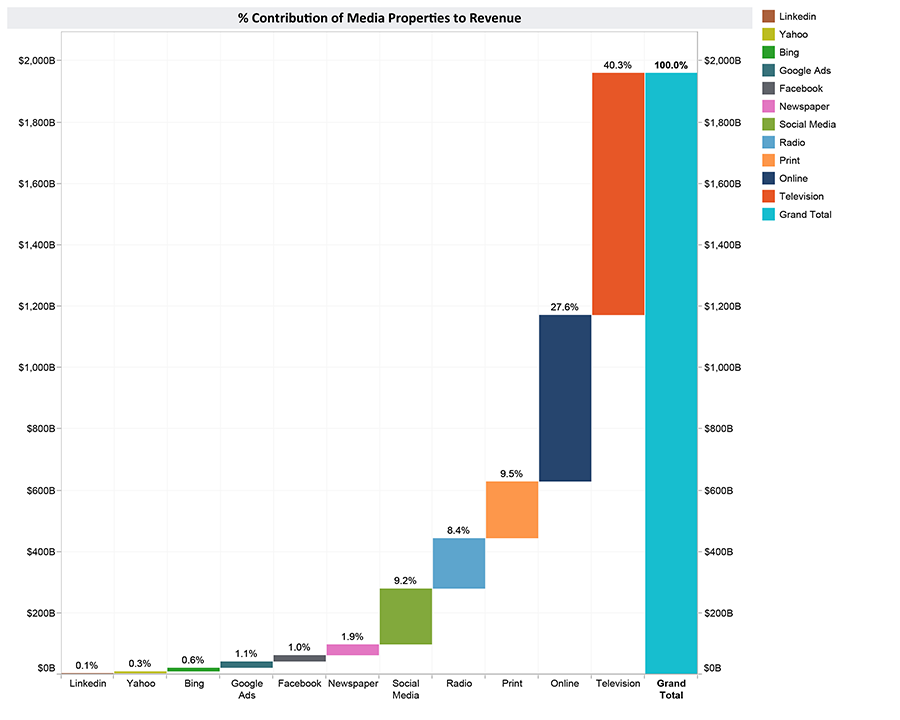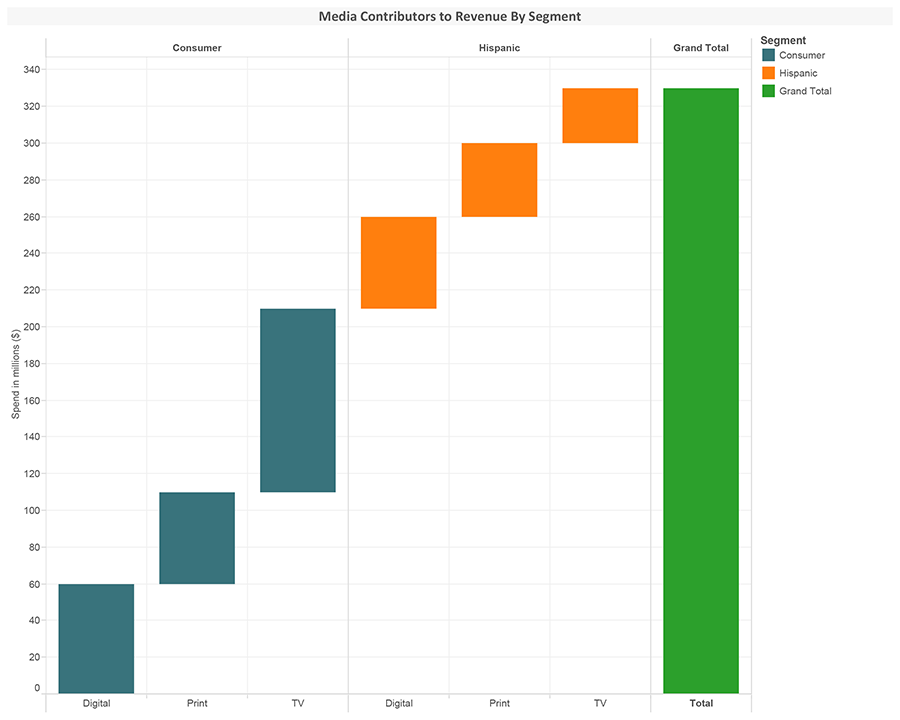There are several methods to allocate marketing budget across channels. Marketers often use terms such as Media Mix Modeling (MMM), digital attribution, multi-touch attribution and cross-channel attribution, but what do these terms mean? What are these techniques used for? Are these methods complementary? In this article, we’ll take a look at how attribution modeling and MMM work, and why you need them for a true perspective of media impact on sales and KPI.
Let’s start with attribution modeling
Attribution modeling assigns credit to various media touch points in the consumer-journey. Analytically, it’s a straightforward approach, but it requires individual-level media consumption information that can be tied to the sales behavior of that customer. For digital channels, it’s possible to get to this information with a high degree of accuracy via cookie technology, which also lets us overlay individual-level digital exposures to online sales conversion.
But can the same digital-like attribution model be applied to non-digital channels and offline sales—and what about products that have a long purchase cycle?
Products like insurance, automotive and prescription drugs are not typically purchased immediately after offline (or online) media exposures. Even if we had individual-level offline media exposure data and sales data at the same level, it’s harder to assign sales/conversion credits to offline channels. There are too many influencing factors, such as latent effects of offline channels, non-linear nature of media exposure effects, or effects of promotional events.

This is where market mix modeling (MMM) comes in
MMM is a statistical approach which integrates all levers that can potentially influence sales or other key performance indicators (KPI). Handling an MMM approach can be a difficult task to execute when dealing with different types of levers— TV, radio, direct mail, digital, seasonality, macro variables and promotions, etc.—with different levels of frequency, granularity or latent effect. But, when an MMM is structured correctly and executed properly, it provides the contribution of each lever with confidence. Only a good MMM structure can assign credit accurately by addressing the effect of media interactions and distributing them across channels accurately—the key drivers of channel level ROI.

Attribution modeling and MMM are two disparate approaches with different levels of data granularity. So why do we need them both?
On one hand, we have individual-level digital exposure data and a way to tie that to individual sales for online channels (attribution), and on the other hand, we have slightly higher level aggregated data, such as daily or weekly, and can tie that to sales probabilistically for offline channels (MMM). Marketers may be okay with running those in silos, but they’re ignoring the fact that running online and offline channels goes with a risk of assigning offline channels’ credit into online or vice versa.
What we need to do is break down the barrier between online and offline channels to take advantage of both worlds.
The first step is the formulation of a flexible MMM structure to identify the effects of various marketing and non-marketing factors. When the MMM is executed and the effects of all channels are identified, individual channel-level attribution analyses come into play, and the results should.
For example:
- If an MMM analysis identifies the effects of digital medium on the brand KPI as X%, digital effects obtained from the digital attribution analysis should also be X%, and anything beyond X% should be credited back to other marketing activities.
- Further, digital tactical-level budget allocation should also roll up to X% of marketing budget, unless it suggests a higher level of ROI opportunity under a different budget condition.
What does this mean for your media ROI?
In our experience running numerous media optimization studies across wide range of brands, we have found that individual channel level attribution analyses can produce misleading outcomes unless they integrate insights from MMM outcomes. Of course balancing between the outcomes of individual channel level attribution analysis and an MMM approach requires experienced statistical hands, but it can be executed nicely when both programs are set up to inform each other and run simultaneously.
We know how to get attribution and MMM to talk—now we’d love to talk to you. Contact us today.
About the Author:
Haren Ghosh, founder and CEO of Analytic Mix, is a research industry veteran with more than 20 years of expertise in delivering client-centric predictive media analytics.